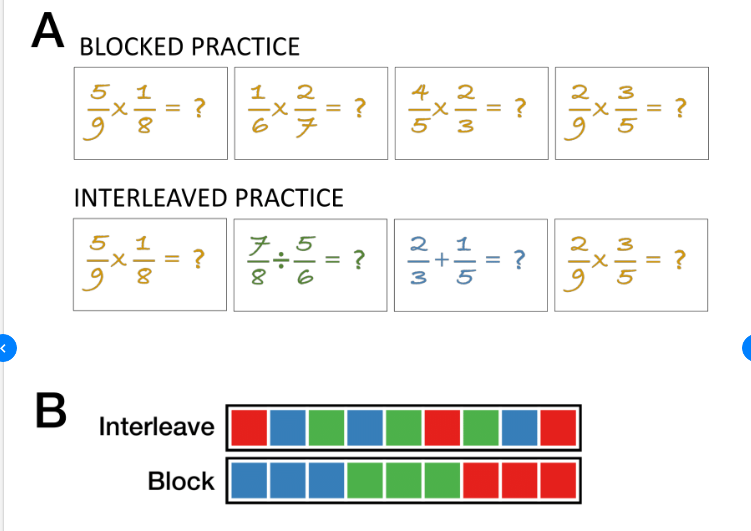
Desirable difficulties are difficulties that challenge the comfort but end up creating long-term desirable effects(Learning).
The concept of “desirable difficulties” was developed by Robert Bjork of UCLA. In his research, he noticed various kinds of experimental phenomena which indicated the emergence of 2 predominant patterns in learning. They are:
- Conditions of instruction or practice (learning) that make performance improve rapidly often fail to support long term retention and transfer. Whereas,
- Conditions of instruction or practice(learning) that appear to create difficulties for the learner, slowing the rate of apparent learning, often optimizes long term retention and transfer.
The first one accelerates the learning(Or speeds up learning), the second one slows down learning by introducing difficulties that benefit long term retention and transfer. These difficulties are what Robert BJORK Calls Desirable difficulties. {Retention means having the information stored in long-term memory in such a way that it can be readily retrieved. Transfer refers to learning in one context and applying it to another.} The difficulties in the latter category are called desirable difficulties because they enhance the very goal of learning, ie retention and transfer. They are difficulties because they pose challenges and they slow down the rate of performance.

The following are 4 important kinds of desirable difficulties that you can apply immediately to your exam preparation.
1. Varying the conditions of learning.
The scientific studies on the effects of variable practice on learning have been demonstrated and replicated for both motor/perceptual tasks as well as cognitive tasks. Varying learning conditions makes learning more effortful but results in enhanced long-term retrieval. In contrast, less variable learning conditions may produce a better initial performance on a task (motor/perceptual or cognitive), but results in little or no transfer of learning. Based on the perceived ease, students may assume that they are effectively mastering the material in conditions of non-variable learning, but this apparent learning may actually prove to be unreliable and transient when tested for generalized situations or tested after a significant time gap. However, when learning is made more effortful with variable conditions, performance during initial phases may be diminished, although such learning conditions are more likely to produce a better transfer, hence produce higher quality learning. Following are practical ways to increase variability in learning :
- Use multiple types of retrieval practice Eg. Mix MCQs, Non-choice Quiz, Descriptive tests, Matching the items in the list, etc.
- Use computer tests, classic paper tests, oral retrieval tests etc.
- Use content variability with transfer practice( apply it to another context).
- Using indirect content and adjacent content. Eg. Bringing Chemistry perspective to biology content.
- Use environmental variability: Chose to learn and teach from different physical spaces.
2. Spacing Effect (Distributed practice).
The spacing effect is a kind of desirable difficulty in which practice sections ( learning sections) are divided into a number of short sessions over a longer period of time. This effect suggests that we learn more effectively when we study in several sessions spread out over a long period of time, rather than studied repeatedly in a short period of time. (This kind of learning requires a longer period of time and discipline which is a desirable difficulty). The opposite is called massed practice ( or cramming), which consists of fewer, longer training sessions. It is generally a less effective method of learning because most of the learning will not result in long term retention and transfer. For example, Cramming for an exam with intense study the night before. By using spaced learning, you will avoid waiting until the last minute to “cram” for an exam. Following are some practical suggestions to incorporate spacing in your exam preparation. • Start early by planning out a study schedule. • You should plan to focus on part of each course at regular intervals. • Each session should be managed to cover old and new materials. Eg. 80% old revision and 20% new. • Use apps like QuizletCramAnki Memrise etc. For more about the science of spacing in learning events check out The Temporal Dynamics of Learning Center or “TDLC”
3. Retrieval Practice( Testing effect).
Another example of desirable difficulty is retrieval practice. Learners tend to prefer easy learning methods with a reduced cognitive effort like re-reading, re-studying or highlight material. They hate testing themselves on the learned material as it forces them to try and retrieve information, which is effortful and not always successful. According to Retrievalpractice.org: Retrieval practice is a strategy in which bringing information to mind enhances and boosts learning. Deliberately recalling information forces us to pull our knowledge “out” and examine what we know. For instance, recalling an answer to a science question improves learning to a greater extent than looking up the answer in a textbook. And having to actually recall and write down an answer to a flashcard improves learning more than thinking that you know the answer and flipping the card over prematurely. Research shows that the single most important practice in promoting long-term retention and transfer is retrieval practice. In retrieval practice, we access our memory to retrieve some particular information without any external memory aids. In other words, we attempt to recall this information in some form given minimal or no cues. By doing so repeatedly and in various contexts, the learner strengthens access to this information by cultivating the retrieval cues related to the particular memory, facilitating long-term retention and transfer of knowledge across contexts. Applications can be of many types and modes:
- Take low stake tests throughout the learning.
- Use multiple types of retrieval practice Eg.MCQs, Non-choice Quiz, Descriptive tests, Matching the items in the list, etc.
- Use computer tests, classic paper tests, oral retrieval tests etc.
- Use apps like Quizlet Cram Anki Memrise etc.
- Align lectures, assignments, and tests, so that important information will have to be remembered at different times.
- Ask questions during lectures to elicit responses that reflect an understanding of previously introduced course material.
- Practice questions in homework assignments.
- Practice questions and quizzes in chapter summaries.
- Group studying with active discussions which allow retrieval and explanation of learned concepts. This will also help us diagnose and reduce the learning illusion called Illusion of explanatory depth
4. Providing contextual interference during learning.
Another example of a desirable difficulty is the Contextual Interference-effect. It is a learning phenomenon where interference during practice is beneficial to skill learning. That is, higher levels of contextual interference lead to poorer practice performance but result in superior retention and transfer performance. Although not effective in every kind of learning activity, the effect of contextual interference was studied and replicated for both motor/perceptual tasks as well as cognitive tasks. In the academic setting, the contextual interference effect was conceived mostly as the dynamics between Blocked practice and Interleaved practice. Blocked practice is when a learner performs a single skill or content over and over, Variation in this learning stage is minimized or nonexistent. The learner then moves on to practice another skill or content in the same way. Thus it involves studying one topic very thoroughly before moving to another topic. By contrast, Interleaving is the process where learners mix, or interleave, multiple topics while they study in order to improve their learning. According to Sean H. K. Kang : Interleaving refers to the benefits of sequencing learning tasks so that similar items, two examples of the same concept, say – are interspersed with different types of items rather than being consecutive. This results in a more variable and challenging task but is associated with benefits in terms of memory and transfer, which apply to concept learning as well as other domains Thus the interleaved study is the opposite of blocked study. If students are trying to revise topics X, Y and Z for an exam, their study routine can be: 1) XXXYYYZZZ, or 2) XYZXYZXYZ Routine 1 is blocked, whereas routine 2 is interleaved. Research in the field of cognitive sciences has consistently shown that routine 2 leads to deeper learning, long term retrieval and transfer of learning.

Image: Teaching the science of learning by Yana Weinstein, Christopher Madan, and Megan A. Sumeracki The following are some ways to apply this to your learning environment.
- Use interleaving with other 3 powerful learning techniques listed in this article above. (also check )
- Interleaving with related skills (or content) often gives better results because of connected nature. Eg. Grammar/ Vocabulary/ Writing /Reading / Listening.
- Apply interleaving to math practice using the following Guide by Doug Rohrer, Robert F. Dedrick, and Pooja K. Agarwal.
- Use spaced repetition apps like Anki etc which include Interleaving principles inbuilt in it. (Automatically avoid blocking to optimize learning).
